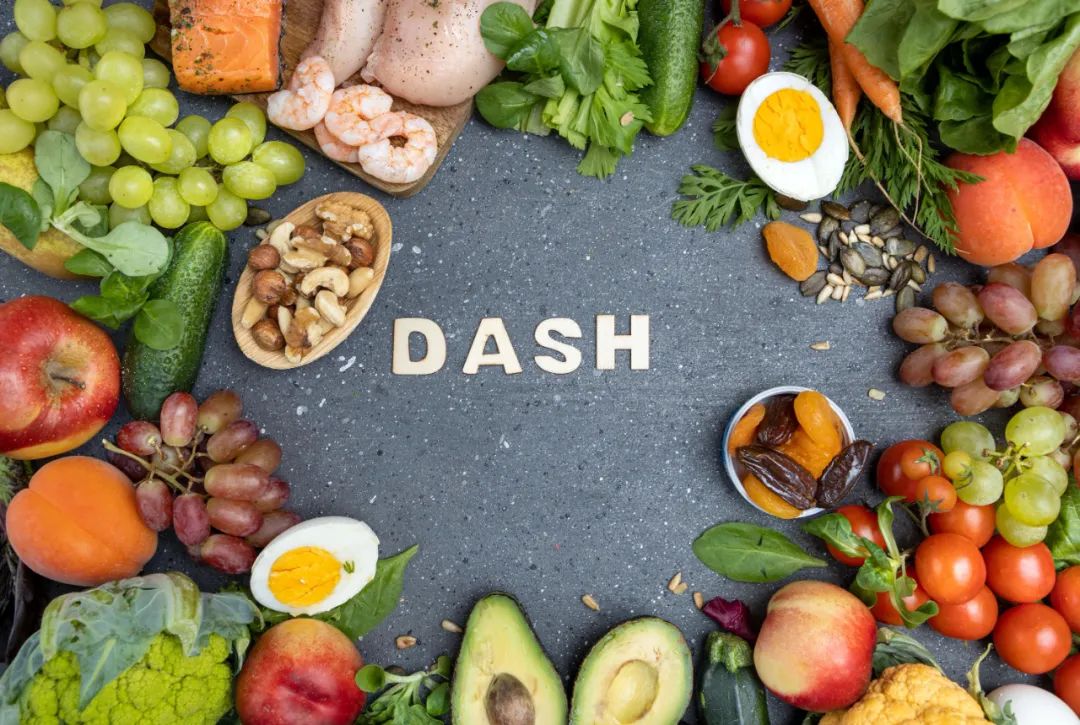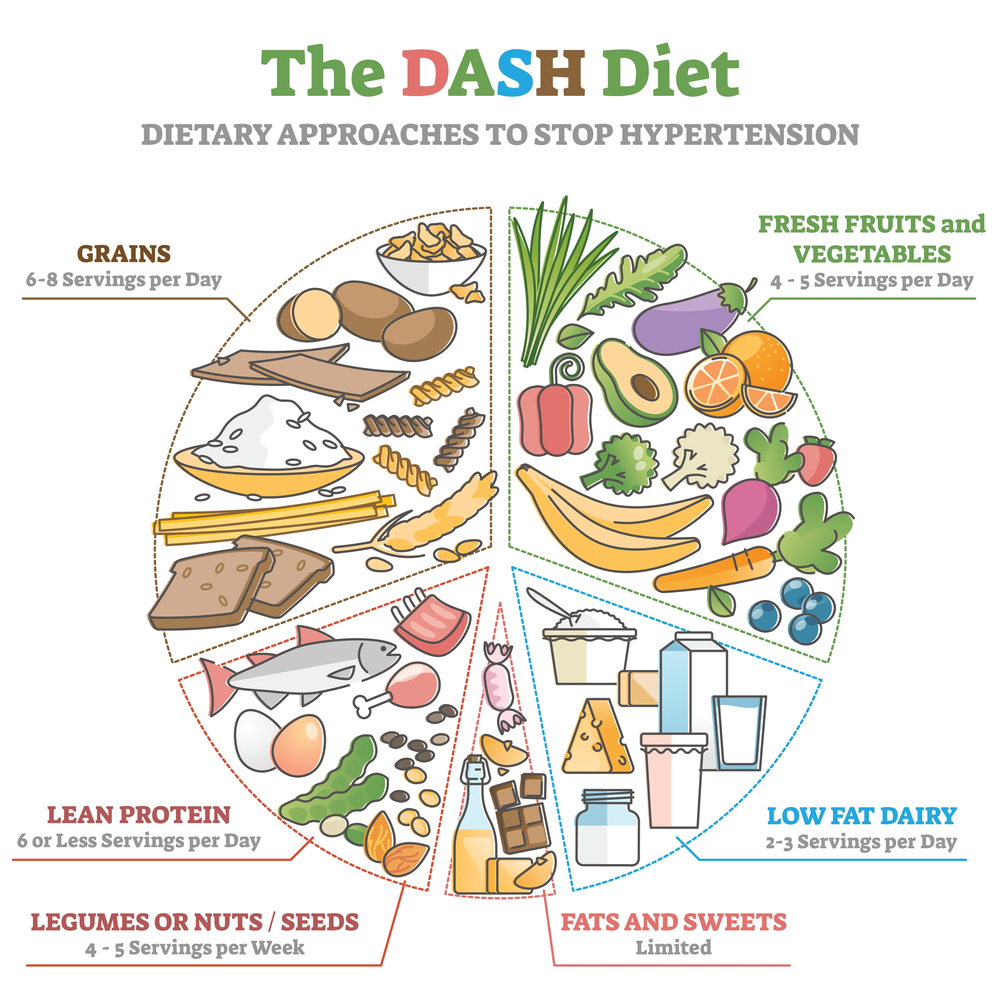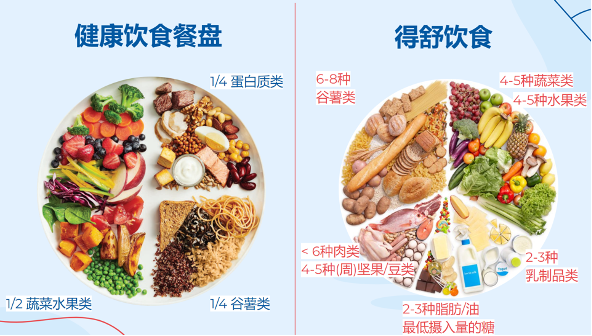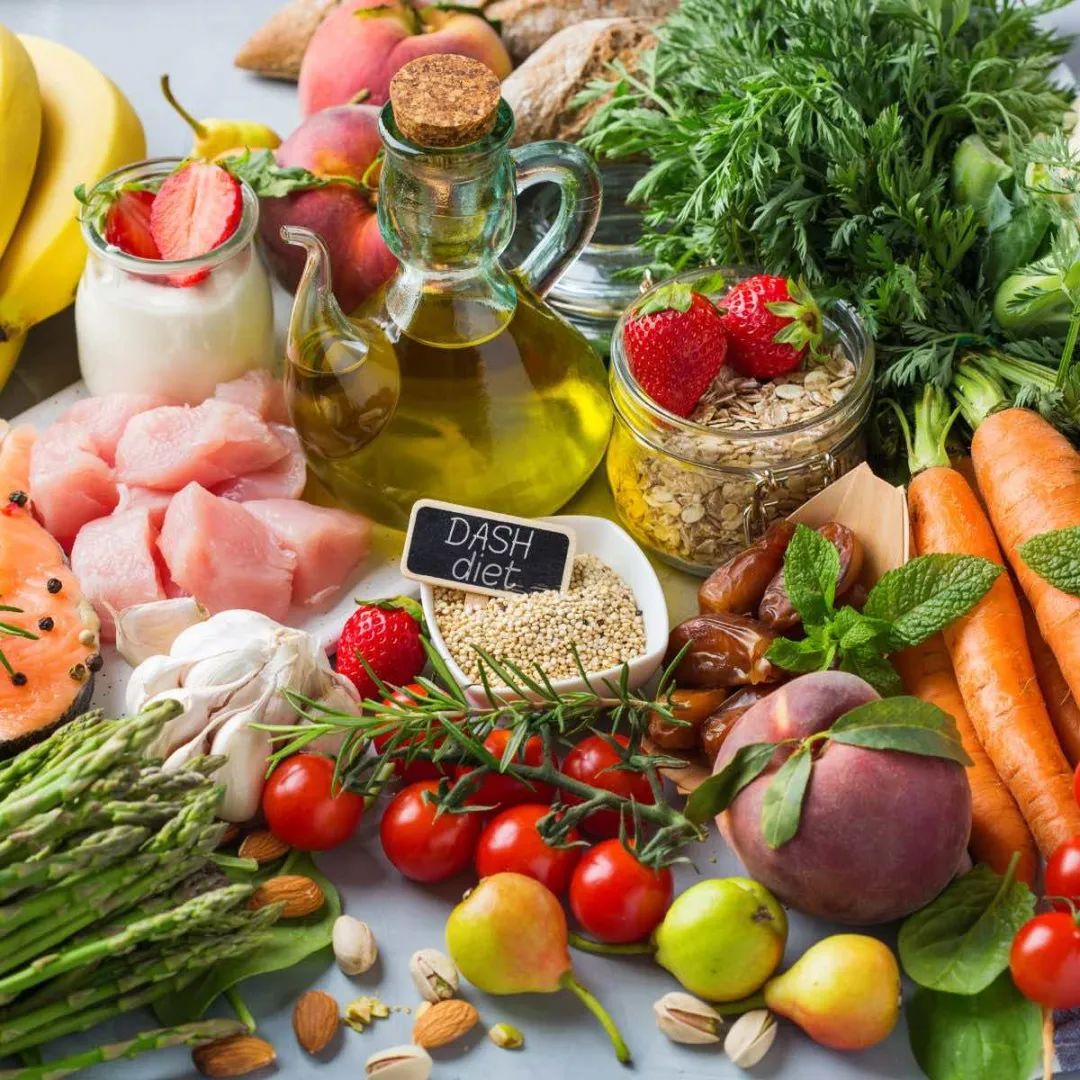
Nutritionist Oria accompanies you to discover down-to-earth nutrition.
Chronic diseases, skin inflammation, and excessive stress can all lead to inflammation in the body or be caused by inflammation.
In addition to taking “anti-inflammatory drugs,” we can also consider a range of foods to help reduce inflammation in the body.This method may not be as quick as medication, but it is completely natural, with virtually no side effects.However, it is important to understand that simply consuming one type of food is unlikely to achieve significant anti-inflammatory effects, so we need to consider the overall dietary combination, such as the protagonist of our discussion today:DASH Diet (Dietary Approaches to Stop Hypertension).
What are “inflammation” and “anti-inflammatory diet”?
When the body is damaged, infected, or stimulated by other factors, inflammation occurs.Inflammation is a normal protective response of the body to injury and is beneficial for recovery.At the same time, many chronic diseases can increase inflammation in the body, such as cardiovascular diseases, diabetes, and obesity.When inflammation becomes a chronic condition, we need to consider “anti-inflammation”.An “anti-inflammatory diet” is a dietary approach to reduce inflammation in the body.However, it is important to note that we are referring to an overall dietary pattern, not just a specific food.This type of diet emphasizes, under the premise ofnutritional balance, ensuring sufficient intake of fruits and vegetables, consuming foods rich in omega-3 fatty acids, and reducing refined carbohydrates, fried foods, sugary drinks, red meat, and trans fats.Many popular healthy eating patterns have been proven to have strong anti-inflammatory effects, such as the DASH diet.
The DASH diet
The DASH diet is a dietary approach that has been scientifically researched and clinically tested.

Its original research aim was to lower or prevent the risk of hypertension through dietary means.However, ongoing research has found that the DASH diet not only effectively manages hypertension but also offers many other benefits.For example, weight loss, blood sugar management, improved cholesterol levels, and its anti-inflammatory effects.A study analyzing seven clinical trials involving 451 participants found that adhering to the DASH diet for eight weeks could show effects in inhibiting the inflammatory process (1).The anti-inflammatory mechanism of the DASH diet lies inits dietary structure and its recommendation of many foods rich in antioxidants and omega-3 fatty acids, as well as maximizing dietary fiber intake.After normal metabolism, the body produces a substance calledfree radicals, which can damage cells, cause diseases, accelerate aging, and promote inflammation in the body.Antioxidants can neutralize free radicals, prevent cell damage, and reduce inflammation in the body.Many foods contain antioxidants, such as fruits and vegetables, nuts, and fish and poultry (2).Omega-3 fatty acids can alter the structure of cell membranes, reduce the release of pro-inflammatory substances, and inhibit inflammatory responses.At the same time, encouraging the intake of omega-3 fatty acid-rich foods helps reduce the consumption of fried foods and trans fats (3).High-fiber foods, such as whole grains, legumes, and nuts, help maintain a balanced gut microbiome. A healthy gut microbiome can promote normal immune function and reduce inflammation (4).

(Image from FITTR.com)
How to implement the DASH diet?
The DASH diet emphasizes dietary diversity.Unlike the commonly mentioned healthy eating plate, the DASH diet further categorizes foods.Instead of eating different types of food in proportion, the DASH diet emphasizes eating several types of foods and the specific amounts of these foods.This issue focuses on the types of foods.
 (Recommended intake chart for DASH diet food categories, calculated daily)
(Recommended intake chart for DASH diet food categories, calculated daily)
Fruits and Vegetables:
In terms of fruits and vegetables, the DASH diet is very similar to the healthy eating plate, bothemphasizing the diversity of fruits and vegetables and prioritizing colorful products.However, from this chart, we can see that the proportion of fruits and vegetables in the DASH diet is only about 1/3, which is lower than the amount in the healthy eating plate.This is mainly because it aims to make more room for other food categories,focusing on the subdivision and diversity of the overall diet.
Staple Foods:
The DASH diet recommendsfocusing on whole grains and tubers, such as whole wheat buns, whole wheat noodles, oats, sweet potatoes, yams, and potatoes.Compared to refined staples, these foods contain more dietary fiber, which aids digestive health and enriches our gut’s beneficial bacteria, thereby helping to reduce inflammation in the body.Related reading: Are the rice and noodles we often eat “friends” or “foes”?
Protein Foods:
Rather than grouping all protein foods together, the DASH diet further distinguishes between meat, nuts/beans, and dairy products.This further distinction of different protein sources does add some steps to daily life, but it can better ensure the richness of our diet.It is also important to emphasize that the DASH dietplaces greater emphasis on the intake of omega-3 fatty acids while recommendingreducing the intake of red meat and cured or semi-cured meats.The DASH diet also particularly emphasizes the intake of sugar and salt, recommending to minimize them as much as possible.For salt intake, the DASH diet recommends eating less than one teaspoon per day, which is about the amount of the first joint of the little finger.

Tips for implementing the DASH diet
At first glance, the DASH diet may seem more complex than the healthy eating plate, but we can gradually adjust our existing diet using the following tips:
1
Enrich the existing diet
There is no need to completely eliminate refined carbohydrates; you can add other ingredients tostaples or add new ingredients tocommon dishes to increase dietary diversity.For example, add some millet, sweet potatoes, or red beans to white rice, or enrich a home-cooked dish by adding some shrimp and mung beans to scrambled eggs with tomatoes.
2
Change ingredient choices
We can usehigher quality food choices to replace some existing ingredients.For example, when making Peking-style shredded pork, we can use chicken instead of pork to reduce red meat intake.We can also use lemon juice and pepper instead of salt for seasoning to reduce salt intake.
3
Make changes based on the current diet
If you do not like smoothies, it may be a bit difficult to drink a fruit smoothie every day to increase fruit variety.However, if you eat a little fruit after each meal, you can try different fruits at that time.This way, the overall dietary volume and habits do not change, while we move one step closer to the DASH diet.

(Image from havardhealth.com)
Conclusion
It is not easy to change your diet immediately, but we can gradually adjust it step by step.We can start by focusing on one aspect, and once we are accustomed to the dietary changes, we can make new adjustments.Slowly increase the diversity of food varieties in the diet to achieve anti-inflammatory effects~
Swipe up to view references
1. Soltani, S., Chitsazi, M. J., & Salehi-Abargouei, A. (2018). The effect of dietary approaches to stop hypertension (DASH) on serum inflammatory markers: A systematic review and meta-analysis of randomized trials. Clinical nutrition (Edinburgh, Scotland), 37(2), 542–550. https://doi.org/10.1016/j.clnu.2017.02.0
2. Arulselvan, P., Fard, M. T., Tan, W. S., Gothai, S., Fakurazi, S., Norhaizan, M. E., & Kumar, S. S. (2016). Role of Antioxidants and Natural Products in Inflammation. Oxidative medicine and cellular longevity, 2016, 5276130. https://doi.org/10.1155/2016/5276130
3. Calder P. C. (2013). Omega-3 polyunsaturated fatty acids and inflammatory processes: nutrition or pharmacology?. British journal of clinical pharmacology, 75(3), 645–662. https://doi.org/10.1111/j.1365-2125.2012.04374.x
4. Swann, O. G., Kilpatrick, M., Breslin, M., & Oddy, W. H. (2020). Dietary fiber and its associations with depression and inflammation. Nutrition reviews, 78(5), 394–411. https://doi.org/10.1093/nutrit/nuz072
END
Author|Emmy
Reviewed by|Oria
Typeset by|Lao Yang
Images|Some from the internet, please delete if infringing.

 Join the food life group to enjoy happy meals
Join the food life group to enjoy happy meals
Add WeChat oriard with the note“Life Group”

❖ Welcome to share with friends! ❖
Recommended Reading
▼
Weight loss, menstruation, fear of gaining weight, the pitfalls of eating rice over the years
Are the rice and noodles we often eat “friends” or “foes”?
The secret of “high-tech diet”: functional foods



